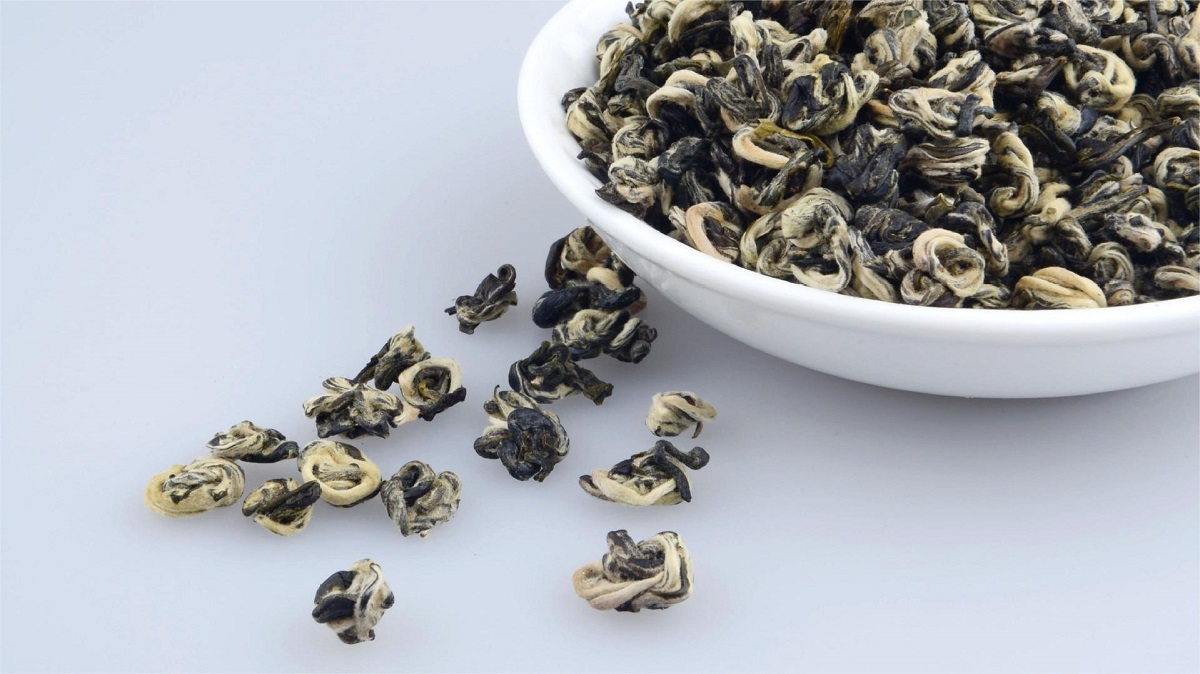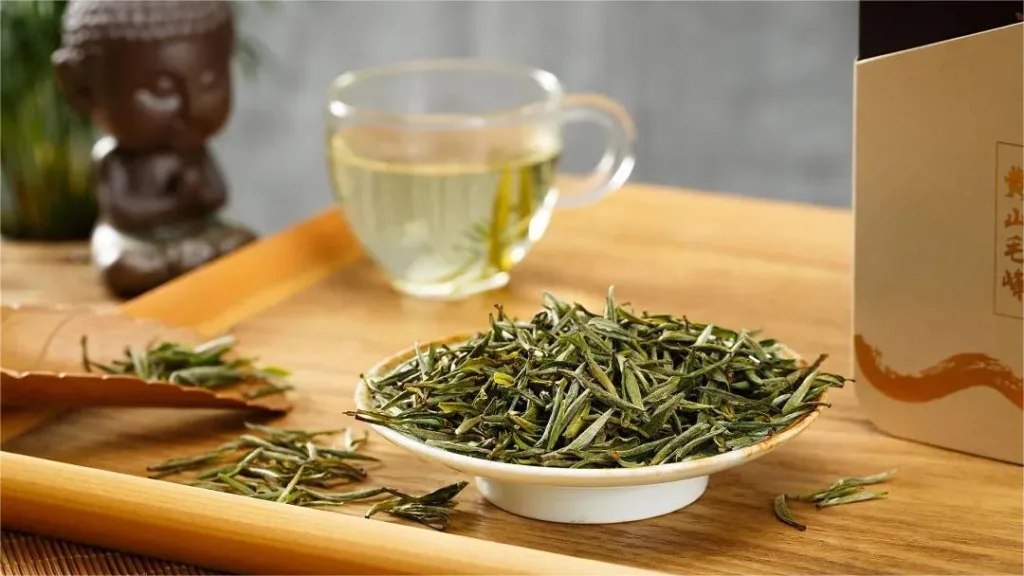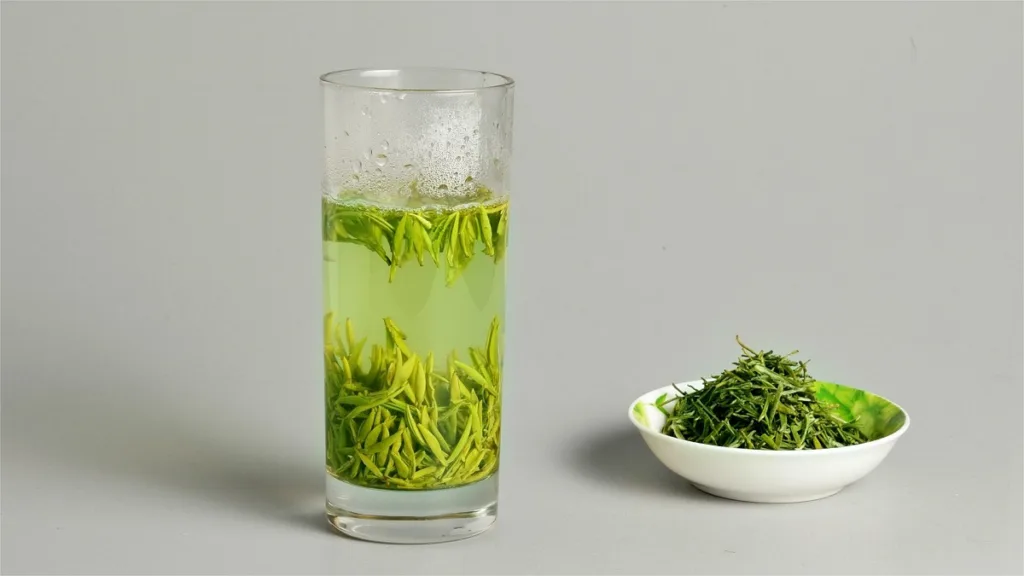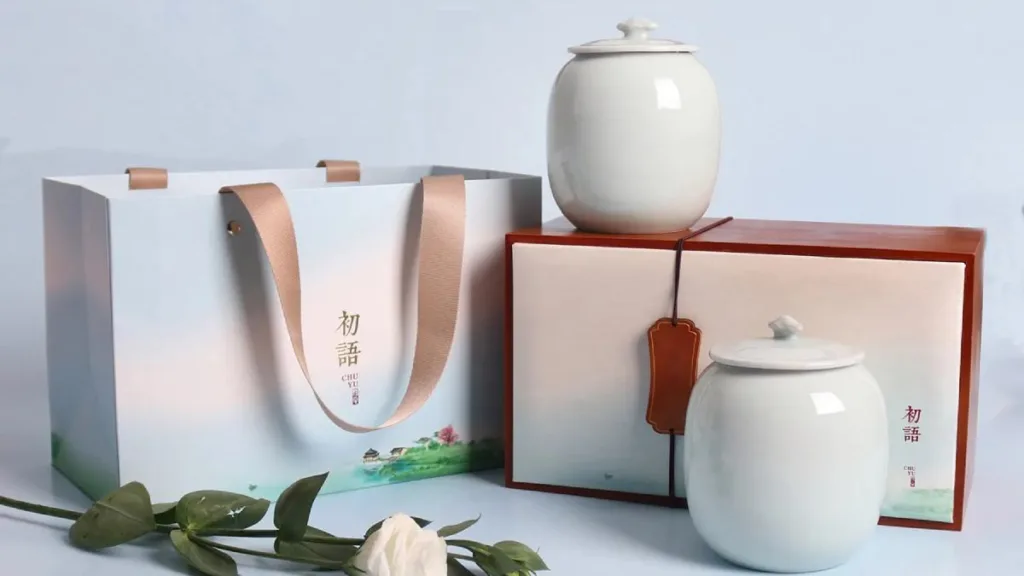Biluochun tea (碧螺春), also known as “Green Snail Spring” in English, is a revered member of China’s top ten famous teas. It belongs to the green tea category and boasts a history of over a thousand years. The name “Biluochun” is closely tied to its place of origin, which is around East Dongting Mountain and West Dongting Mountain near Lake Tai in Wu County, Suzhou City, Jiangsu Province. As a result, it is sometimes referred to as “Dongting Biluochun.”
With a history that dates back to the Tang Dynasty, Biluochun tea has been held in high esteem, with various monikers such as “Kung Fu Tea” and “New Blood Tea.” To produce high-quality Biluochun tea, it requires plucking around 60,000 to 70,000 tea buds to yield just 0.5 kilograms of dried tea leaves. The processed tea leaves are tightly rolled, revealing white downy tips, displaying a striking silver-green color, and coiled into snail shapes. Given its spring harvest, it aptly carries the name “Biluochun (Green Snail Spring),” and when brewed, it releases fragrant and refreshing aromas, akin to rolling white clouds.
Historical Significance
Biluochun tea boasts a rich history of more than a millennium. In the local area, it was initially known as “Dongting tea” and also went by the moniker “Startling Fragrance.” Legend has it that a nun ascending the mountains in spring casually plucked a few tea leaves. Upon brewing the tea, an exquisite fragrance filled the air, leaving her to exclaim, “Startling Fragrance,” which led to the local people affectionately naming the tea “Startling Fragrance.”
During the Qing Dynasty, Emperor Kangxi tasted this tea during an inspection and was highly impressed by its curled appearance, green color, and unique fragrance. However, he found the name “Startling Fragrance” somewhat indecorous, prompting him to rename it “Biluochun.” There are various interpretations of the tea’s name origin. Some believe that Biluochun already had its name during the Ming Dynasty, while others suggest that its name was inspired by its green color, snail-like shape, spring harvest, and its connection to Biluofeng Mountain. Regardless of the origin, Biluochun tea has a long history and became an annual tribute tea during the Kangxi period of the Qing Dynasty.
Brewing Methods
Biluochun tea requires different brewing techniques depending on its quality and characteristics:
- For tightly rolled tea leaves:
- Preheat the teacup by pouring hot water into it, then add the tea leaves without covering the cup.
- Allow the tea to steep until it cools to the right temperature for consumption, typically between 45 – 55°C. Avoid temperatures above 60°C, as it can scald both the mouth and nose, or below 40°C, as it may result in a less pronounced aroma and a more astringent taste.
- If using a glass teacup, hold it in your hand and taste the tea when it reaches the desired temperature. If using a lidded teacup, pour a small amount of tea onto the back of your hand to check the temperature.
- For the second steeping, add more water when the tea soup is still one-third full.
- For loosely rolled tea leaves:
- Preheat the teacup and add the tea leaves. The slightly elevated cup temperature should already release the tea’s fragrance.
- Pour hot water into the cup, filling it to about one-third of its capacity (or a little less, but ensure the tea leaves are covered). This tea naturally expands, so be gentle to avoid scalding the tender leaves.
- If using a glass cup, pour the water along the edge, and if using a lidded cup, invert the lid and use it as a funnel to direct the water along the cup’s edge.
- Let the tea steep for about two minutes to allow the leaves to absorb water and expand, then fill the cup with more hot water.
- As you pour, the tea leaves will dance gracefully in the water, creating a visually captivating experience.
Health Benefits
Biluochun tea offers various health benefits:
- Stimulant Effect: The caffeine in tea leaves can stimulate the central nervous system, helping people feel more alert, improve cognitive function, alleviate fatigue, and enhance productivity.
- Diuretic Effect: The caffeine and theobromine in tea have diuretic properties, making it useful for treating edema and water retention.
- Cardiac and Antispasmodic Effects: Caffeine is known for its cardiac and muscle relaxation properties, which can relieve bronchial spasms, promote blood circulation, and act as a valuable adjunct in treating conditions such as bronchial asthma, cough suppression, and myocardial infarction.
- Arteriosclerosis Prevention: Tea polyphenols and vitamin C in tea have anti-coagulant and anti-arteriosclerotic effects. Regular tea consumption is associated with a lower incidence of high blood pressure and coronary heart disease.
- Antibacterial and Antiseptic Effects: The tea polyphenols and tannic acid in tea have antibacterial properties, coagulating bacterial proteins and effectively killing bacteria. It can be used in the treatment of gastrointestinal diseases such as cholera, typhoid, dysentery, and enteritis.



